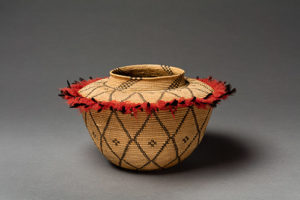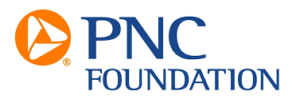Colors Count: Exploring Math and Science with the Color Wheel (PreK – Grade 1)
Through use of the color wheel and objects from the Biggs’ collection, students will learn about primary and secondary colors, insects, geometry and the natural world. At the end of the lesson students are asked to draw objects from nature that match the colors on the color wheel.
Download the Lesson Plan (PDF) Download the PowerPoint
Keep Still!: Learning the Elements of Art Through Still-Life Paintings (Grade 1 – Grade 3)
Explore a selection of still-life paintings in the Biggs collection to help your students understand basic principles of composition, perspective, shape, and line. Afterwards, students will use this knowledge to create their own still-life.
Download the Lesson Plan (PDF) Download the PowerPoint
Name That Animal!: Exploring Abstract and Realistic Art Through Animals in Art (Grades 1-3)
Through an exploration of sculpture and paintings of animals from the Biggs’ collection, students will learn the different between abstract and realistic art. To activate this learning, students will have the opportunity to create their own abstract and realistic drawings of an animal. This lesson also includes a supplemental lesson for teachers to give an extended lesson on sculpture in their classrooms.
Download the Lesson Plan (PDF) Download the Lesson Plan (PDF) Download the PowerPoint
A Day at the Beach with the Biggs (Grades 2-3)
Students discuss a beach landscape painting from the Biggs and identify key components of the painting. Students will then apply this knowledge to a creation of their own beachscape with a lighthouse.
Download the Lesson Plan (PDF) Download the PowerPoint
Preserve That Perspective (Grades 3 -4)
Students will learn about the history of the Cape Henlopen lighthouse, how environments change over time, and how artists use perspective and horizon lines to create landscapes. Using what they’ve learned, students will create one landscape of a place they care about the way it looks now and one landscape of that same place if it falls subject to erosion and weather damage.

Download the Lesson Plan (PDF) Download the PowerPoint
Process Makes Perfect: The Creative and Practical Process of Christo and Jeanne-Claude (Grades 3-5)
Learn about installation art and scale through close observation of works in a special exhibit of the artist team Christo and Jeanne-Claude. Students will get a chance to use what they’ve learned to design their own outdoor sculpture.
Download the Lesson Plan (PDF) Download the PowerPoint
Tick Tock! Time for Art at the Biggs! (Grade 3 – Grade 4)
Turn back the clock with the Biggs to learn about the history of clock making, the job of museums, and the geometric shapes that make up a grandfather clock. Wrap up the tour with a guided drawing lesson to make a clock.
 Download the Lesson Plan (PDF) Download the PowerPoint
Download the Lesson Plan (PDF) Download the PowerPoint
Go West Young Artists: Western Exploration in the American Landscape Tradition (Grades 3-5)
Students will learn about foreground, middle ground, and background, as well as scale and perspective through looking closely at a landscape painting. They will also gain a basic understanding of where in America the landscape depicts and the movement of Americans from the East Coast to the West. Students will then create their own landscape drawing by applying their knowledge of these art concepts.
Download the Lesson Plan (PDF) Download the PowerPoint
Arggh…Draw Like a Pirate Matey! (Grade 4)
Help students find their inner pirate as they learn about Delaware history, pirates, and portraits. Students end their visit by drawing and naming a pirate of their own.
Download the Lesson Plan (PDF) Download the PowerPoint
Bird Parts and Bird Arts (Grades 4-6)
Why do birds look the way they do? Students will explore this question through the historic prints of John James Audubon and related works by contemporary artists. They will learn how these artists record birds, their habits, and habitats. Students will then create their own bird for a habitat of their choosing using guides for beaks, feet, and feather color.
Download the Lesson Plan (PDF) Download the PowerPoint
Building a Basket (Grades 4-8, with adjustments as needed)
Students will learn the function and historical context of different baskets in the feature exhibit “Rooted, Revived, Reinvented: Basketry in America.” They will apply this knowledge to answer questions about baskets from the exhibit and get a chance to design their own basket.

Download the Lesson Plan (PDF) Download the PowerPoint
Conservation Conversations: Understanding What Conservators Do (Grades 4-7, with adjustments as needed)
What do conservators do? Student will learn the answer to that question and get the chance to see how two paintings from the Biggs collection were conserved. To more thoroughly understand this process, students will then apply this knowledge to report of the conservation and preservation of an historical object.
Download the Lesson Plan (PDF)
Reading a Portrait (Grades 4 – 8, with adjustments as needed)
Students will look at two portraits in the Biggs collection and, as a group, analyze the symbolism depicted in them. They will use this knowledge to individually analyze a portrait of George Washington and then create or brainstorm their own portrait of a politician of their choosing.
Download the Lesson Plan (PDF)
Download the PowerPoint
A Place of One’s Own: Awareness of Self, Others, and the Past in the Places Portrayed at the Biggs (Grades 7-8)
Students will develop an understanding and appreciation of self, others, the natural world, and constructed environments through looking at landscapes and interiors in the Biggs collection. To apply this knowledge, students will create their own drawing or work of prose about a place that is special to them.
Download the Lesson Plan (PDF)
Download the PowerPoint


















